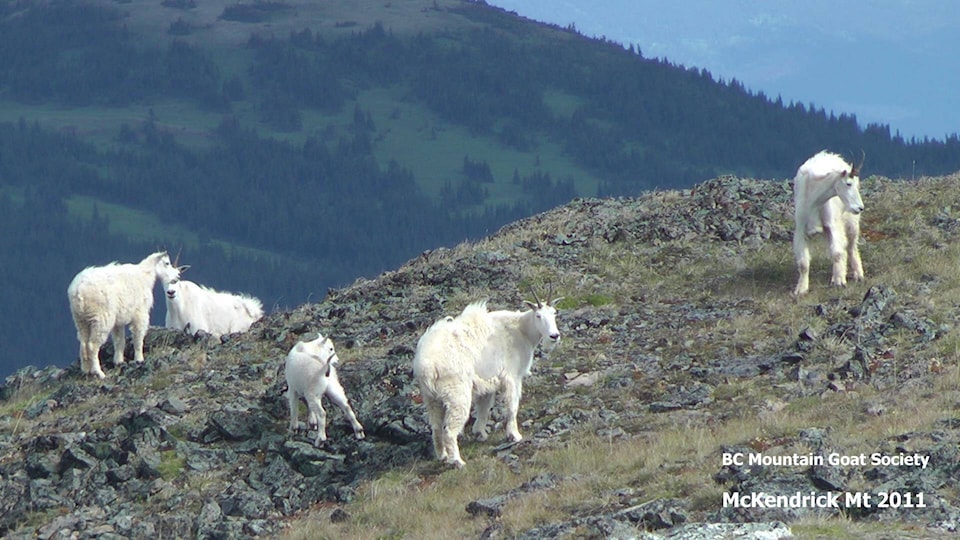What happened to the goats?
Members of the British Columbia Mountain Goat Society (BCMGS) have monitored the mountain goat population on McKendrick Mountain 28 kilometres east of Smithers since 2011 and watched it decline steadily from twenty goats in 2011 to only six goats in 2019. If the population continues to decline, the BCMGS predicts the herd will disappear within a few years. Once gone, the herd will not return.
It’s time to do everything we can to keep the herd safe and healthy to allow it to rebound. The herd has never been hunted, so hunting is not the cause of the decline. One thing we can do is reduce the impact of skiers and snowmobiles. Every time a skier or snowmobile goes to the summit, the goats retreat to the cliffs to stay safe. The goats will stay in the cliffs for hours or overnight. There is very little on the cliffs for the goats to eat. Deep snow in the cliffs makes it difficult for the goats to get around and saps their energy.
Mountain goats are on the ragged edge of survival in winter. They can lose up to 27 per cent of their body weight in a winter season. Their browse is just enough to sustain them until spring.
Any disruption by people reduces time spent feeding or resting. Displacement can also cause alarm hormones to build up in a goat’s body and can affect immunity and reproduction. So a disruption today can result in fewer new kids next season.
Skiers can disturb mountain goats on McKendrick Mountain, but there are few skiers compared to the large number of snowmobiles. The irony is that with all the speed and noise of an approaching snowmobile, the driver may never see a goat. The herd of goats will escape to the cliffs long before a snowmobile gets to the top of the mountain. The drivers may never realize the profound and damaging effect they have on the goat herd. The drivers may never figure out that they just passed an entire herd of mountain goats.
Snowmobiles can affect mountain goats in another way. Snowmobile tracks compact the snow. After a snowmobile travels over a snow-covered grass meadow, mountain goats have to work four times as hard to paw through the compacted snow to feed on the dry grass underneath. More work for a goat means less chance of surviving until spring.
Winter is especially tough on newborn kids and juvenile goats. They have less body fat accumulated from autumn and less body mass to offset the winter cold. While adult mountain goats can usually survive until spring, repeated disruptions and displacement of young goats can cause hypothermia and death. When you add the death of young goats to the natural attrition of adult goats due to predation, avalanches and old age, you can easily see how a mountain goat herd can disappear.
The BCMGS is calling for all snowmobilers to follow the BC provincial guidelines for motorized vehicles and keep 500 meters from goat habitat on the summit of McKendrick mountain. The society is also asking skiers to follow the guidelines and stay 100 meters away. The goats need easy access to the grass on the McKendrick Mountain summit meadow. The goat herd needs time and space to recover from repeated displacements. Mountain goats, skiers and snowmobilers can easily co-exist if people respect the goats’ winter home.
Submitted article
